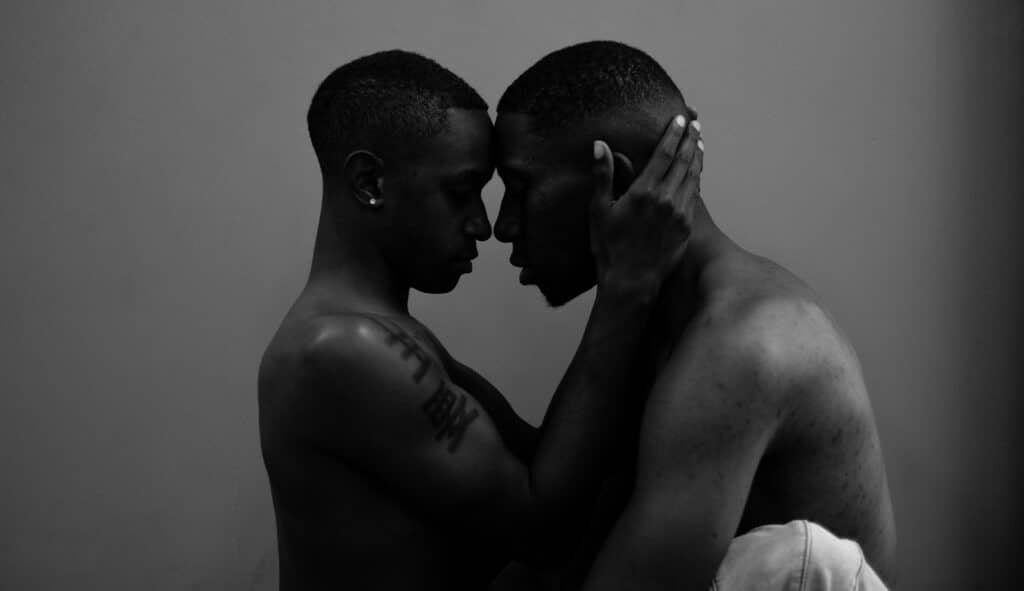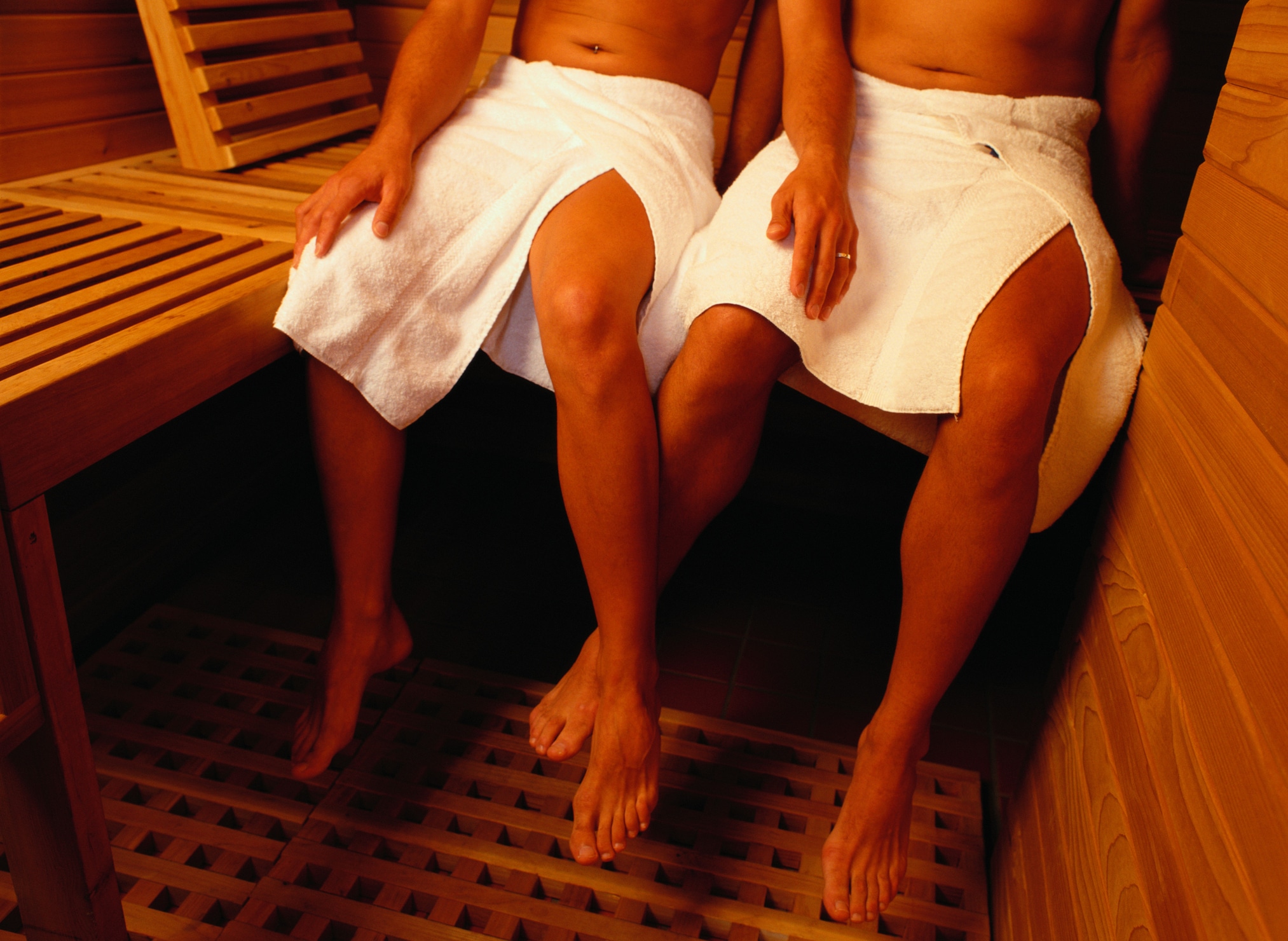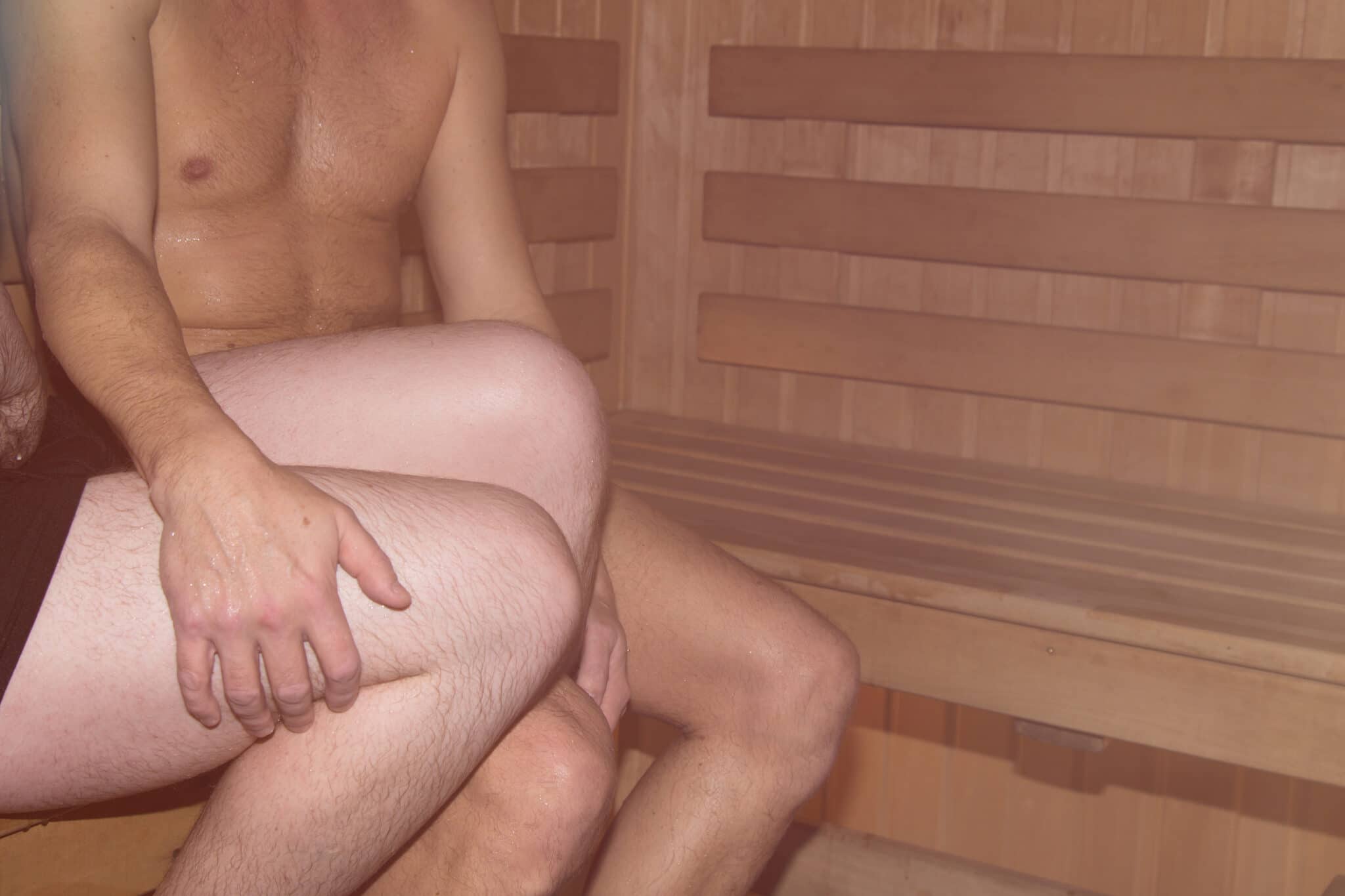The colourful, sticky history of gay bathhouses: From 15th century scandal to modern staple

A man in a gay sauna. (Envato Elements)
All the way back in 1492, the leading criminal court in Florence, Italy, issued a warning to local bathhouses to keep out “suspect boys” as part of a clampdown on the “vice of sodomy”.
At that time, it wasn’t particularly easy for men to find spaces where they could have sex with each other comfortably, which is likely how they came to discover that bathhouses were the perfect venue. People were already in various states of undress, after all.
Sadly, it wasn’t long before they were caught out. Officials in Florence were determined to clamp down on sex between men, and in the two years that followed, 44 men were convicted for engaging in homosexual activity in the city.
It’s a remarkable tale that gives us a fascinating insight into the history of the gay bathhouses and saunas queer people know and love today. Right across the world, gay and bisexual men still frequent saunas, bathhouses, or spas – whatever you want to call them – with the specific goal of getting off with other guys.

Saunas and bathhouses have been a place for men to connect for centuries. (Pexels)
Thankfully, unlike the residents of Florence in 1492, we now have specific, gay bathhouses – venues which cater exclusively for the community, and where sex is celebrated and encouraged. They’ve provided a lifeline for countless people who want to explore their sexuality – and they’ve become a mainstay in queer culture as a result.
That’s not to say that it’s been an easy ride for gay bathhouses. Over the years, their existence has repeatedly been threatened by police raids and homophobic lawmakers. Bathhouses have a long, fascinating, and sometimes heartbreaking history which goes back centuries.
From Paris to Granada, gay sex in bathhouses caused a stir
IFlorence wasn’t the only city struggling with an uptick in gay sex in bathhouses in the 15th century – the same thing was happening in Granada, Spain. After the city was conquered in 1492, Queen Isabel the Catholic ordered that all public baths in the city be closed in a bid to put a stop to homosexual activity.
The issue reared its head once again in Paris in 1876. Police in the city raided a public bathhouse, called the Bains de Gymnase, after six people – boys and men aged between 14 and 22 – were found to be engaging in an “offence against public decency”. All six, alongside the manager and two staff members, were prosecuted.
Almost 30 years later, a similar incident occurred in New York City when the Ariston Hotel Baths were raided by police. Some 34 men were arrested in the raid and charges of sodomy were brought against 16. Two undercover police officers had gone into the establishment before the raid, where they reported witnessing numerous men having oral and anal sex. The incident has gone down in history as the first of many anti-gay police raids in New York.
As time went by, queer men started to realise en masse that bathhouses would allow them to have sex securely and behind closed doors. The Everard was a Turkish bathhouse that operated from 1888 onwards in New York, but by the 1920s, it was frequented almost entirely by queer men looking for sex. Police raids in 1919 and 1920 didn’t deter the community from gathering there – by the 1930s, it had acquired the nickname “Everhard”, and was seen as one of the premiere locations for men who wanted to have sex with other men.
In the 1950s, people started to open venues that were specifically referred to as gay bathhouses. By the time the 1970s rolled around, they had been firmly adopted in gay culture as an essential stop along the journey to self-expression and fulfilment. Larry Kramer wrote about them in his 1978 novel Faggots, and famous figures such as Truman Capote and Rock Hudson frequented bathhouses.
Bathhouses became so popular in the gay community that Bette Midler actually started her career by performing in them. She was a regular singer at the Continental Baths in New York City in the early ’70s, and she eventually acquired the nickname “Bathhouse Betty”.
HIV arrived on the gay scene in the early 1980s, and it wasn’t long before politicians and the media realised that gay bathhouses were an easy target to blame.
I think it’s a safe space for gay men – they feel a little bit free to meet other people, get involved, and discover more about themselves too.
Numerous bathhouses were raided in this period, and some jurisdictions banned bathhouses entirely, claiming that allowing them to remain open posed too big a risk to public health.
In 1984 in San Francisco, new rules were imposed to limit the spread of HIV which meant that operating a bathhouse was effectively impossible. Some bathhouses closed, realising that they were unable to make the business work under the strict new policies. That ban was only lifted in January 2021.
In 1985, New York’s health department ordered that bathhouses be shuttered as the AIDS epidemic continued to cause devastation in the gay community.

(Pexels)
The emergence of HIV coupled with efforts to close bathhouses had a chilling effect on the establishments, and there was a time when it looked like they might not survive at all. Despite this, they’re still going strong today across the world – even if they’re not quite as popular as they were at their height in the ’70s and ’80s.
Gay bathhouses have created ‘a sense of community and camaraderie’
Jameson Farn is author of Bathhouse Babylon, a book where he recounts his experiences of working in and managing gay bathhouses over a 13 year period. He says they remain significant today because they have the power to bring queer men together to explore who they are.
“For gay men, they’ve created a sense of community and camaraderie,” Jameson tells PinkNews. “I think it’s a safe space for gay men – they feel a little bit free to meet other people, get involved, and discover more about themselves too.”
Things have changed on the gay scene since the ’70s and ’80s – we now have hook-up apps on our phones, and it’s now easier for queer men to explore their sexualities than ever before in much of the western world. Still, Jameson says bathhouses are an integral part of gay culture to this day – especially after the isolation many have experienced throughout the coronavirus pandemic.
“I think bathhouses are important because people need that human touch at the end of the day. We need to have that contact with someone, whether it’s long term or just for 30 minutes. I don’t think apps can bring that to people.”
It’s not even always about sex, he points out. When Jameson worked in bathhouses, they had customers who would come in just to watch television and talk to the staff. Others just like to watch what’s going on in the bathhouse.
“Not everybody goes there for sex,” he says. “You get to know the regulars, and they’re the ones who really support the business. They don’t always get involved, they just like having that human aspect. Bathhouses can really help with loneliness, because even if you’re just minding your business, you’re seeing human interaction, whether that’s just two people chatting or having sex. It just seems to make people happy and fulfilled.”
I’ve seen people come in, get involved with everything right away, and feel like they’ve found freedom on earth.
Bathhouses are vital to this day for people who might be in the closet or still not quite sure what their sexuality is, Jameson adds. He says they’ve been giving people the opportunity to dip their toes into the water without taking the plunge for years.
“We used to get phone calls all the time from people who would want a tour first, or people who would ask a million questions. You can kind of see it in a person’s face when it’s their first time, but there’s no pressure to do anything. Those spaces are usually quite large anyway, so you can find a quiet corner where you can just observe things if you’d prefer. I’ve seen people come in, get involved with everything right away, and feel like they’ve found freedom on earth, and then I’ve seen other people come in, not even take a look at the full venue, and literally run out the door. It’s not for everyone, and we always just tried to make everyone feel welcome.”
Most bathhouses actively promote safe sex
Jameson is also keen to point out that most bathhouses actively promote safe sex, and they’ve been at the forefront of the fight against HIV transmission since the start. Any bathhouse that cares for its clients gives out free condoms and lube, and everyone is strongly encouraged to take care of themselves and others.
“We went through condoms like crazy,” Jameson reflects of his time working in bathhouses. “We gave out free lube too, and we had a health nurse who would come in once a week and you could meet with her privately to talk about personal things. You could even get a flu shot if you wanted. The health aspect is very important to that type of business. You want to promote safe sex and a safe environment overall so that people do keep coming back.”
Specifically gay bathhouses have been around in some form for a century, but there’s still a lot of handwringing about their existence. In Jameson’s experience, it’s the people who get the most upset about the existence of bathhouses that are usually the most interested in trying them. He says anyone who’s curious should give it a try.
“There’s no harm in trying,” Jameson says. “If you don’t like it, you don’t like it – and that’s OK.”



